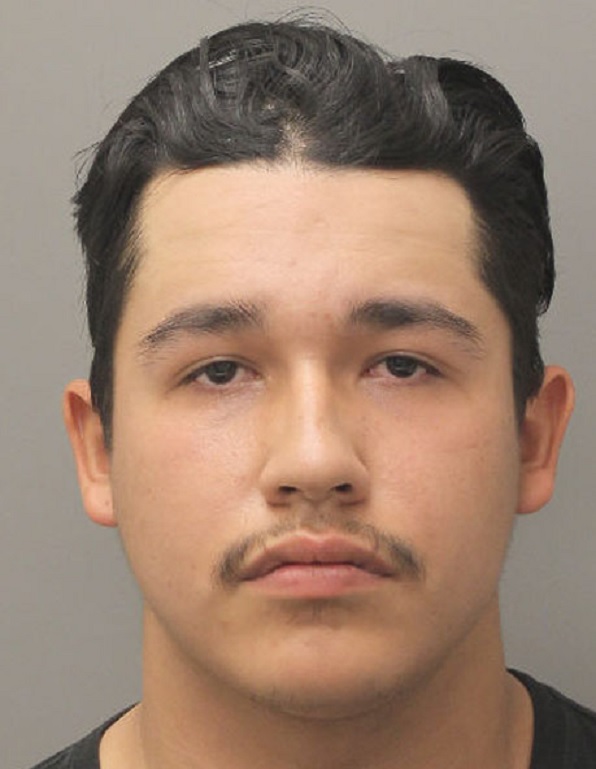Neighbors rally to curb illegal moose hunting
 November 9, 2016
November 9, 2016
"The moose population we have today is not sustainable. The moose will be gone in two or three years at the present pace." That was the sobering message shared by Dale McBurney on Monday evening in Pipestone. Before a crowd of more than 40 convened at the Home Farmers Resto, municipal councillors from multiple jurisdictions, conservation officials and concerned citizens gathered to discuss a disturbing spike in illegal poaching of area wildlife. At the heart of the discussion was a notable increase in night hunting which is taking place with alarming frequency.
Residents and officials from five southwestern municipalities were on hand to share some of their own recent experiences as well as learn what action is being taken by municipal councils to address the matter.
McBurney, the President of the Hartney Game & Fish Association has been surveying moose populations annually since 1982 for the area. He reported that he is seeing some troubling trends in the area, especially on the heels of his most recent count over the past few weeks. From the tally made during an aerial survey this year over the past three weeks, he estimates that the moose populatio is at roughly 50% of last year's counts. Unfortunately, it's a trend that he has seen before.
"In the Turtle Mountain area, night harvesters moved in there and they saw numbers drop from 248 moose to eighteen over a six year period. Eventually, the Province had to step in and shut down hunting and harvesting [to prevent extinction]," says McBurney. He sees the same in store for the whole of southwestern Manitoba if something isn't done. "Usually it takes something severe to make change and perhaps that's what's going on here that people will get angry enough that we can make change."
McBurney's concerns were echoed by Phil Dornian from the Souris-Glenwood Game and Fish Association who shared his concerns that it may take up to a generation to replenish local the moose population for area residents, visitors and outdoor enthusiasts to enjoy.
It's Getting Dangerous
In September, southwestern Manitoba experienced a fatality connected with night hunting. 24 year old Dylan Hapa was injured and later died in hospital after suffering a fatal gunshot wound while night hunting. While Hapa may have been exercising his right to hunt at night as afforded by his status as a resident of the Sioux Valley first nation under the present law, his death illustrates the need for Manitoba to explore legislation changes to follow similar regulations in Saskatchewan in Alberta.
"The safety aspect is insane," says McBurney. "We've got people shooting down municipal roads, we've got night hunters shooting into pastures where livestock is out to graze later in the season. It's only a matter of time before something or someone gets shot that will make the rules change."
It's Not Only Limited to Moose
Cody Denbow is a member of the Oak Lake Archery Club and is an active bow hunter in the area. Recently, he came upon a scene where two deer had been slaughtered at night within close proximity to each other. His discovery was even more startling due to the nature of remains that were left on the roadside.
"I found two deer along the main road in the R.M. of Sifton last week," says Denbow. "Both deer were skinned just far enough to take the hindquarters and back strap off and the rest was left to waste. It was obvious to me that this occurred as a result of 'night lighting'. It was quite shocking to find and I know of cases where moose have been found in the same condition, missing only the hindquarters."
The Challenge With Enforcement
"With the budgets that conservation officers have in place, there's no way they can enforce the rules," says McBurney. His view is supported by Sifton Councillor, Scott Phillips who identifies that there is a 10,000 square kilometre territory stretching northwest from the Manitoba-Saskatchewan-North Dakota border which is serviced only by two conservation officers stationed in Virden. It's almost impossible to secure a timely response when night hunters are spotted.
Upon inquiry to the Province, Phillips reports that ten part time officers have been assigned to the area for a short term to help address the issue and ensure additional visibility to curb activity. This increased coverage has also included some air patrols of known trouble areas. Aerial coverage did detect some illegal hunting activity near Carberry, however foggy conditions prevented identification and apprehension of the suspects.
Lobbying the Minister
Phillips reports that rural councillors have been actively engaging area MLAs and Member of Parliament for support and have submitted a request to meet with the Minister of Sustainable Development, Cathy Cox at the Association of Manitoba Municipalities at the upcoming convention. In addition to their statistical and anecdotal information about what has been occurring in the area, they also plan to present a petition to illustrate the importance of this matter to area residents.
What Can You Do?
While exacting legislative change may be a lengthy process, Phillips says that farmers are directed to post no hunting signs on the perimeter of their property to clearly communicate that trespassers refrain from coming onto their land. In the event that you should discover unauthorized activity on your property at any time but particularly at night,you should call your local RCMP detachment to request their attendance at the scene. Because these hunters will be armed, citizens are urged to be mindful of their own safety and not take matters into their own hands.
For more information on the action being taken by Scott Phillips and his fellow Councillors from the rural municipalities of Sifton, Pipestone, Two Borders, Whitehead and Grasslands, or to get more information on how to add your name to the petition to end night hunting in the area, contact the R.M. of Sifton office by phone during office hours at 204-855-2423 or e-mail reception_sifton@mymts.net.

![]() November 1, 2024
November 1, 2024








![]() November 1, 2024
November 1, 2024
![]() October 31, 2024
October 31, 2024![]() October 27, 2024
October 27, 2024![]() October 25, 2024
October 25, 2024
![]() November 19, 2016
November 19, 2016
![]() November 10, 2016
November 10, 2016
![]() November 10, 2016
November 10, 2016
![]() November 9, 2016
November 9, 2016
![]() November 6, 2016
November 6, 2016